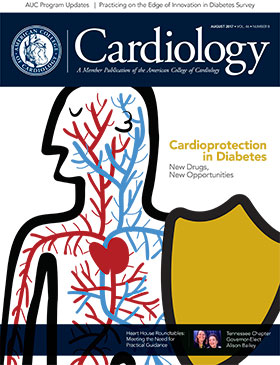Rhythm control is a cornerstone of therapy for nonvalvular atrial fibrillation (AFib) and can significantly improve AFib symptoms. However, it may be underused in outpatient centers across the U.S., and there is substantial practice variation, according to a randomized clinical trial published in the American Heart Journal.
Results showed only one in five AFib patients received rhythm control, while only one in 50 received catheter ablation, the most recent innovation in AFib treatment. The study assessed patient (age, gender, race, insurance type and more) and practice (number of providers, area type and practice region) factors associated with rhythm control treatment.
Patients who received rhythm control were more likely to be younger (69 years), white (76 percent) and privately insured (56 percent) than those who were not treated with rhythm control therapy (72 years old, 58 percent white and 51 percent privately insured).
Additionally, there was significant variation in the proportion of patients who received rhythm control based on practice factors (median 22.8 percent). The proportion of AFib patients who received catheter ablation also varied (median 0.3 percent ). Nearly half (46.1 percent) of practices using rhythm control did not treat patients with catheter ablation.
“Our finding that race, insurance and whether a patient was seen by an EP [electrophysiologist] physician are significant patient and practice factors associated with rhythm control further suggests that differential access, potentially by socioeconomic status, may be a driver of differential treatments,” write the study authors.
They conclude that “although current guidelines suggest that patient factors […] should guide treatment decisions, there is evidence of large unexplained practice variation and unnecessary patient factor variation in rhythm control and catheter ablation decisions. By identifying the factors that lead to differences in treatment strategies, we can determine their appropriateness and better align rhythm control use to optimize patient outcomes in AF[ib].”
Gehi AK, Doros G, Glorioso TJ, et al. Am Heart J 2017;187:88-97.
<<< Return to top


